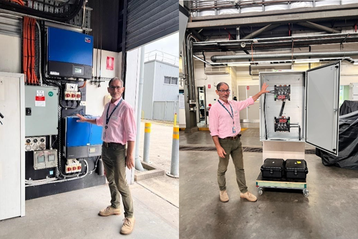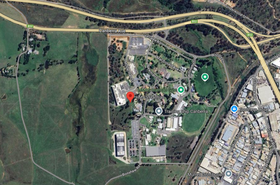Australia's national science agency CSIRO is partnering with one of Alphabet’s skunkworks projects to develop a new type of inverter.
CSIRO this week announced it is working with Tapestry on a smart inverter project to better handle renewable energy on the grid.
Tapestry is part of Alphabet’s X moonshot lab (formerly known as Google X). The company is working on several projects to help modernize grid operations and planning through greater real-time visibility and more simulation capabilities.
The prototype smart inverter was designed by Dr. Leo Casey, Tapestry’s chief scientist. It has a range of new sensors and software, including grid-forming software. The inverter can communicate with other devices on the grid like solar panels or batteries, working with them to keep the grid stable, amid fluctuating supply and demand.
The inverters feature signal sensing and signal filtering hardware, as well as grid forming and microgrid software so that the device can not only more accurately detect voltages and currents, but also act on that information. The prototypes have been tested at CSIRO’s Newcastle Energy Centre and described the early results as “promising.”
CSIRO energy director Dr. Dietmar Tourbier said: "This work with Tapestry builds on CSIRO’s 20+ years of research on Australia’s energy system, emissions reductions, and economic futures. The transitions required for Australia to meet its emissions commitments and remain globally competitive are complex, and solutions require collaboration across industry, government, finance, and the global energy sector.”
CSIRO said the new prototype is more compact than traditional models: comparable to the average laptop, they deliver an impressive 300kMW output. This translates to the capacity of 164 inverters currently available in the market. As well as silicon carbide, they utilize back-to-back connections with the inverters, which offer higher voltage and power levels without the need for a single, oversized inverter.
The companies said the inverter offers greater densities than commercially available inverters for a lower price.
CSIRO project manager Himani Goyal added: “Electricity distribution network operators and emerging third-party entities like virtual power plant operators are going to be most interested in the potential of this technology.”
Launched in 2021, Tapestry is working on GridAware; a set of intelligence, planning, and operations tools to manage and modernize the distribution grid, allowing utilities to automate the inspection process on grid assets. The company’s Grid Planning Tool is a grid simulation tool designed to speed planning and forecasting processes.
Tapestry is also working with AES in the US in Indiana and Ohio, as well as with Consumers Energy in Michigan; CEN in Chile; Distributed Power Africa in South Africa; and Vector in New Zealand.







